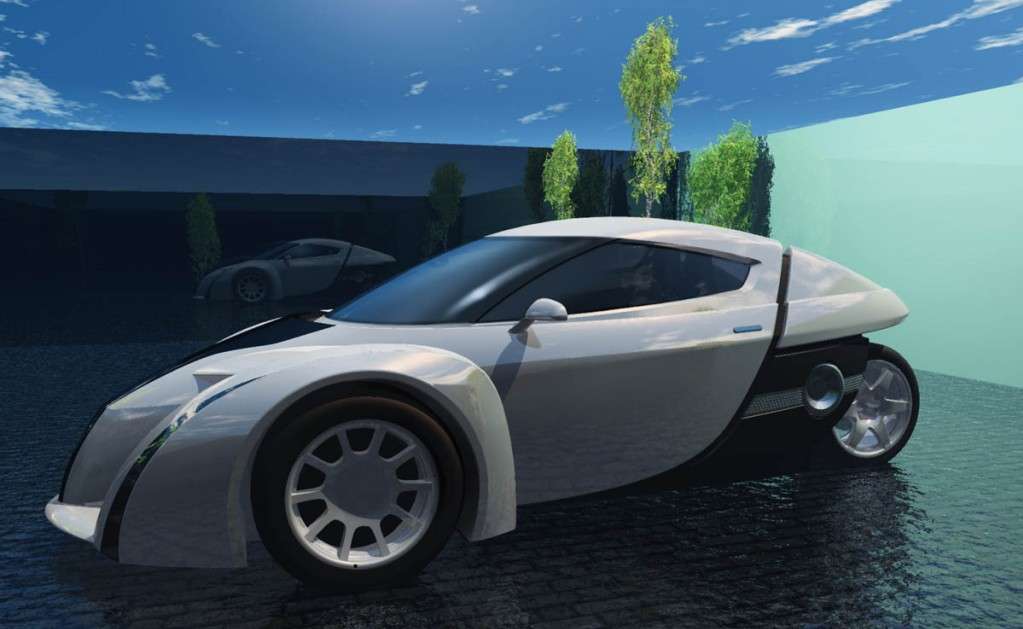MOORESVILLE, NC--(Marketwire - March 17, 2011) - Li-ion Motors (OTCBB: LMCO) (FRANKFURT: LL9L) -- According to the U.S. Energy Information Administration, the United States and Canada use 2/3 of oil consumption for transportation, far more than for heat and power.?Gas consumption accounts for almost 45 percent of all oil use.
More than crude oil barrel price, demand is what drives high gas prices at the pump. So the best way to keep gas prices in check would be investment in proven alternative transportation technology such as Li-ion Motors' (OTCBB: LMCO) (FRANKFURT: LL9L) lithium-ion battery powered electric cars, small trucks and motorcycles.
"Investment in a company like Li-ion Motors and the increased use of electric vehicles by government, business and individuals will help control prices across the board," says Li-ion Motors CEO Stacey Fling. "By decreasing demand at the pump through putting more cars like our Wave II, Inizio and gas-to-electric conversions on the road, prices will drop and this will have a positive domino effect on every other business that is slave to oil for production or shipping.
"That's real economic stimulus."
Increase in demand is impacted by many factors, most recently by increases in car ownership and production needs in China, India and other emerging markets. Japan, which is already a major consumer of oil, will only see that grow drastically, primarily for power generation, as their nuclear system was compromised by the recent natural disasters.
The Los Angeles Times reported that, "Many analysts are predicting a sharp rise in energy prices, particularly on the West Coast, as refiners scramble to replace more than 1 million barrels a day in refined fuels production lost because of Japan's earthquake and tsunami.
"West Coast refineries are the most likely supply source for the Japanese, experts say, which could reduce the amount of gasoline and diesel fuel available for U.S. drivers and businesses, possibly boosting prices that were already rising in response to higher oil costs."
"It's the butterfly effect," says Fling, "and some butterflies are bigger than others."
Gasoline accounts for about 2/3 of the total oil used for transportation in the United States with the rest comprised of diesel fuel which is used primarily for trucks, buses, railroads, and a few passenger auto engines, jet and other aviation fuel, and residual fuel oil, which is used for tankers and other large ships.
"The math is simple and sound," says Fling. "By actively engaging in a proven oil-free alternative, we can keep America on the road and decrease domestic demand for oil at the same time with our proven electric vehicles. Our Wave II won the Progressive Insurance Automotive X Prize averaging 187 miles per gallon equivalent. The cost for that is about $3. Even the best hybrids out there can barely do 25% of that."
Not only would this help control demand and provide lower costs for planes, trains and ships as well as all the gas-powered vehicles still out there but it would also help keep costs down on oil used for other products.
Expanded drilling is just a short-term Band-Aid still dependent on oil and subject to the whims of the marketplace and not a long-term solution such as electric drive transportation.
"The frantic calls for the government to open up offshore drilling in order to bring down oil costs are more grandstanding than helpful," says Fling, "especially when real solutions like investment in proven electric vehicle technology can have immediate effect."
About Li-ion Motors Corp.: ?(OTCBB: LMCO) (FRANKFURT: LL9L), headquartered in Mooresville, NC with corporate offices in Las Vegas, NV, is a leading developer and manufacturer of electric powered automobiles including the WAVE II and the Inizio.
Previously known as Hybrid Technologies, the company has more than ten years' experience and expertise in the conversion of internal combustion cars to all electric for both individual and corporate customers as well as government agencies such as NASA.
The company won the Progressive Automotive X Prize in 2010 for its WAVE II, which came with a $2.5 million (USD) award. During the X Prize competition, the WAVE II whose electric motor is powered by lithium-ion batteries governed by a proprietary battery management system (BMS) was certified by the Argonne National Laboratory at 202.5 MPGe (miles per gallon equivalent).
The Inizio is the world's first 100% electric supercar, capable of 170 mph and acceleration from 0-60 mph in up to 3.4 seconds. Both vehicles are moving into production for consumer sales in 2011.
Along with the production of original vehicles, the company licenses its proprietary BMS and technology to automobile manufacturers seeking to advance their electric vehicle offerings.
FORWARD-LOOKING STATEMENT:
This press release may include forward-looking statements within the meaning of Section 27A of the Securities Act of 1933 and Section 21E of the Securities Exchange Act of 1934. These statements are based on the Company's current expectations as to future events. However, the forward-looking events and circumstances discussed in this press release might not occur, and actual results could differ.




